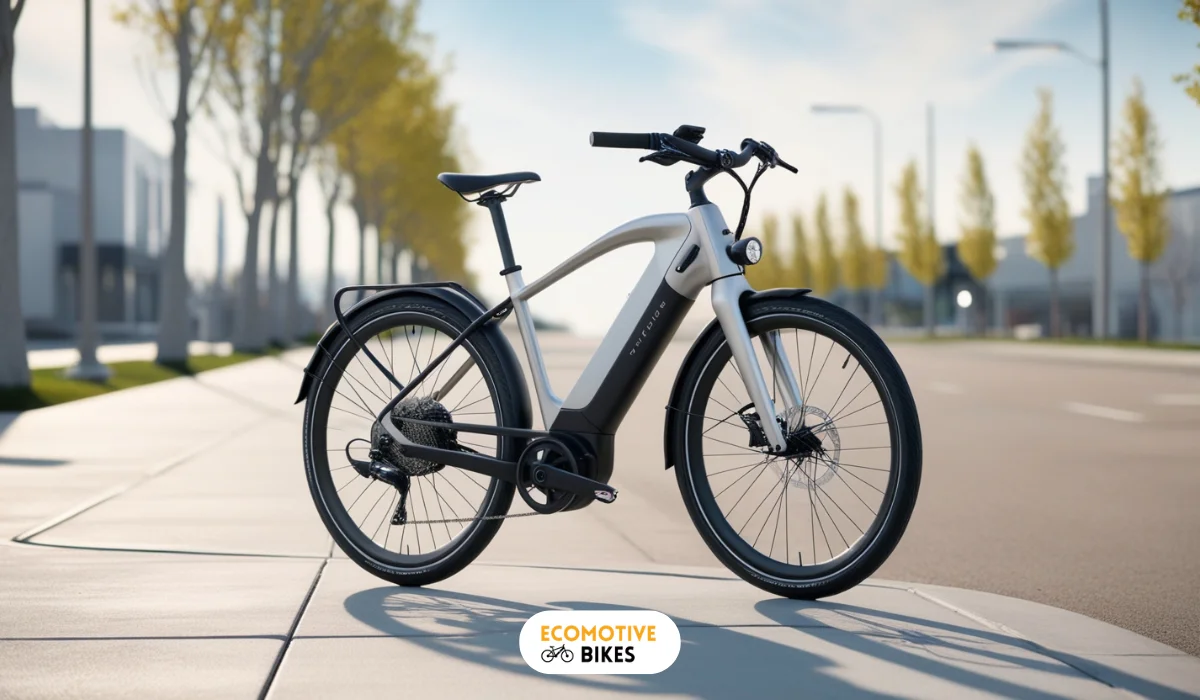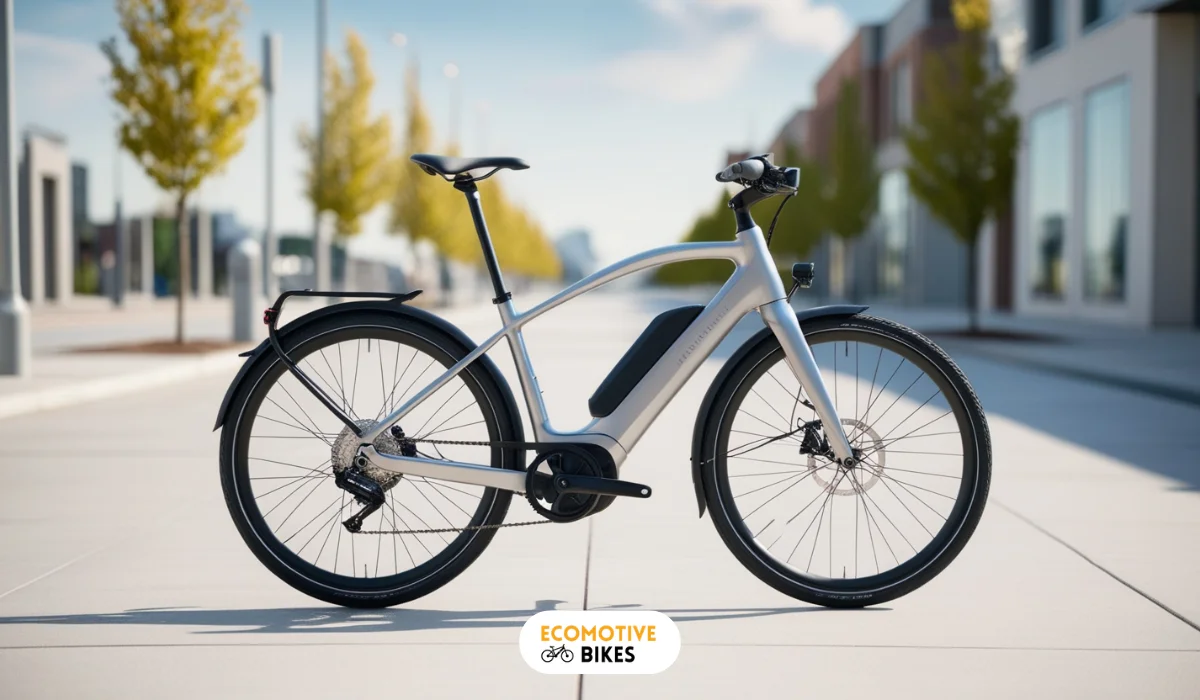Are Electric Bike Batteries Interchangeable? Check Compatibility and Swapping
Are electric bike batteries interchangeable across models? Discover key factors like voltage, capacity, and connectors to ensure a seamless battery swap for your e-bike.
Table of Contents
Related Articles:
Most electric bike owners eventually face the inevitable question: are electric bike batteries interchangeable? The answer, unfortunately, is not a simple yes or no. The compatibility of replacement batteries depends on various factors, such as the original manufacturer, the specific e-bike model, and the type of battery system it uses.
When considering replacing an e-bike battery, it’s crucial to understand the intricacies involved in ensuring the safe and effective functioning of your electric bike.
This guide aims to shed light on the complexities of finding a suitable replacement battery for your e-bike, and exploring options from major manufacturers and third-party suppliers. Let’s examine the details to help you navigate the world of interchangeable electric bike batteries with confidence.

Basic concepts of battery interchangeability
To ensure compatibility when replacing electric bike batteries, it is crucial to consider a few fundamental concepts. These include battery dimensions, mounting types, voltage, capacity, and communication protocols.
Battery dimensions and mounting types
Basic understanding of battery dimensions and mounting types is important in ensuring a proper fit when replacing electric bike batteries. Different e-bike models may have varying sizes and styles of battery compartments, necessitating the need for specific dimensions and mounting mechanisms.
Recognizing the compatibility of these factors is key to a successful battery replacement. The table below outlines some common types of e-bike battery dimensions and mounting types.
| Basic | Example |
|---|---|
| Dimensions | 50mm x 150mm x 250mm |
| Mounting Types | Rack-mounted, Downtube-mounted, Frame-integrated |
| Dimensions | 60mm x 180mm x 300mm |
| Mounting Types | Rack-mounted, Downtube-mounted, Frame-integrated |
| Dimensions | 70mm x 200mm x 350mm |
| Mounting Types | Rack-mounted, Downtube-mounted, Frame-integrated |
Voltage, capacity, and communication protocols
Basic understanding of voltage, capacity, and communication protocols is crucial for selecting compatible replacement batteries for electric bikes. For instance, a battery with the correct voltage output must be chosen to ensure compatibility with the e-bike’s motor system.
Capacity, measured in watt-hours, determines the range and performance of the electric bike. Communication protocols such as Battery Management Systems (BMS) ensure proper monitoring and control of the battery operation.
Overall, having a strong grasp of these fundamental concepts is important when considering the interchangeability of electric bike batteries. By understanding battery dimensions, mounting types, voltage, capacity, and communication protocols, e-bike enthusiasts can make informed decisions when replacing or upgrading batteries for their electric bikes.
OEM vs. Aftermarket batteries
Defining OEM and aftermarket options
Aftermarket batteries are those produced by manufacturers other than the original equipment manufacturer (OEM) of the electric bike. While OEM batteries are designed specifically for the e-bike model and have the advantage of being factory-made to fit seamlessly, aftermarket batteries may offer more options in terms of capacity or features.
However, using aftermarket batteries may void warranties and compatibility can be an issue.
Considerations when choosing replacement batteries
When selecting a replacement battery for your e-bike, there are several factors to consider. Compatibility with the existing system is crucial, as using a battery that is not suitable for your bike can lead to performance issues or even damage.
Capacity and range are also important factors to consider, as well as the reputation and reliability of the manufacturer. Additionally, be sure to check if using an aftermarket battery will void any warranties or affect the overall performance of your electric bike.
Considerations must be made regarding the battery management system (BMS) as well. It is recommended to use a charger from the original manufacturer to prevent any malfunctions during charging. Always check with the e-bike or kit company to understand their policy regarding aftermarket replacement batteries, as using a replacement battery that does not come from the original manufacturer may void the warranty.
Brand-specific battery systems
Bosch electric bike batteries
Once again, when it comes to Bosch electric bike batteries, it’s important to note that only Bosch-manufactured batteries are used on new Bosch e-bikes. There have been four basic designs made by Bosch over the years, including rack-mounted batteries, downtube-mounted batteries, frame-integrated batteries, and frame-integrated ‘Smart’ option batteries. These batteries come in various capacities ranging from 300Wh to 750Wh.
Shimano electric bike batteries
The Shimano range includes rack-mounted, downtube-mounted, and frame-integrated batteries with capacities ranging from 418Wh to 630Wh. Each battery model has limited compatibility with specific battery mounts, so it’s crucial to replace an old battery with one that is suitable for the mount on your e-bike.
Shimano’s batteries are backward compatible with older models, with the oldest current battery being the BT-E6000 compatible with all current drive units introduced since 2016.
The availability of legacy batteries or backward compatibility information for Shimano systems may be limited, but it’s worth checking with the manufacturer or authorized dealers for specific details on replacement options.
Brose electric bike batteries
Brose systems are used by various manufacturers such as Scott and BULLS, with frame-integrated 630Wh batteries being a common option. While Brose’s own website primarily lists the 630Wh battery, information on compatibility and interchangeability with third-party batteries may vary based on the manufacturer using Brose systems.
For example, Specialized offers cross-compatibility with their own brand batteries on some models, but details on backward compatibility can be complex.
As with other brand-specific batteries, it’s recommended to reach out to the manufacturer or authorized dealers for information on compatible replacement options for Brose electric bike batteries. Utilizing original manufacturer batteries whenever possible is advised to ensure optimal performance and safety.
Yamaha electric bike batteries
Yamaha offers integrated, rack-mounted, and frame-mounted options ranging from 400Wh to 600Wh for their e-bike systems. The compatibility of these batteries with older models or backward compatibility information may be challenging to find.
Manufacturers like Giant, who use Yamaha motor systems, have their own brand of batteries known as EnergyPak, with various capacities and compatibility across the range. You should check with the specific manufacturer for details on replacement options for Yamaha electric bike batteries.
Related: Are ebike batteries safe?
Compatibility within battery brands
Cross-compatibility between models and years
Between various models and years, there are varying degrees of cross-compatibility when it comes to electric bike batteries. Some brands, like Bosch, have specific designs that allow for interchangeability between different versions and capacities of batteries.
For instance, Bosch PowerPack batteries in 300, 400, and 500 Wh versions are interchangeable with each other, providing users with flexibility in choosing a replacement battery for their e-bike. Users must be aware of these compatibility options to ensure they select the right replacement battery.
Restrictions and limitations of interchangeable batteries
Compatibility with interchangeable batteries may come with certain restrictions and limitations. For example, using a replacement battery that does not come from the original manufacturer may void the warranty of your electric bike.
We should check with the e-bike or kit company to understand their policy on aftermarket replacement batteries before making a decision. Understanding these restrictions will help users make informed choices when replacing their e-bike batteries.
Third-party replacement batteries
Sourcing from reputable manufacturers
Third-party replacement batteries can be a viable option for individuals looking to replace their e-bike batteries. When seeking out third-party batteries, it is crucial to source them from reputable manufacturers.
These manufacturers typically adhere to industry standards and provide quality products that ensure compatibility with various e-bike models. By opting for batteries from reputable manufacturers, users can have more confidence in the reliability and performance of the replacement battery.
Risks and benefits of third-party battery options
Replacement e-bike batteries sourced from third-party manufacturers offers both risks and benefits to users. One of the primary benefits is the potential cost savings compared to purchasing original batteries from the bike manufacturer.
Third-party batteries may provide a wider range of options in terms of capacity and compatibility. However, there are risks involved, such as the potential voiding of the e-bike warranty when using non-original batteries. It is crucial for users to carefully weigh these risks and benefits before opting for third-party battery replacements.
Options for third-party batteries can vary significantly, so users must conduct thorough research and choose a reputable manufacturer that offers compatible and reliable replacement options. By understanding the risks and benefits associated with third-party battery choices, e-bike owners can make informed decisions when it comes to replacing their batteries.
Impact on e-bike warranties
When considering third-party battery replacements for e-bikes, it’s crucial to understand the potential impact on warranties. Using batteries that are not provided by the original manufacturer may void the warranty of the electric bike.
This consideration is vital for e-bike owners who want to ensure that their warranty remains intact for any future maintenance or repair needs. It’s advisable to consult with the e-bike manufacturer or dealer to fully understand how using third-party batteries may affect the warranty coverage of the e-bike.
Dealing with legacy and discontinued systems
Not all electric bike battery systems are in production or supported by manufacturers anymore. When dealing with legacy or discontinued battery models, finding replacements can be challenging. However, there are solutions available for those with older e-bike systems.
Solutions for outdated or discontinued battery models
Battery systems from older or discontinued e-bike models may still have options for replacement or repair. Third-party suppliers specializing in legacy e-bike batteries may offer compatible alternatives for these older models.
Some e-bike shops or online retailers may carry replacement parts or refurbished batteries for these outdated systems.
Recycling and disposing of old e-bike batteries
Ebike batteries, especially older ones, require proper disposal and recycling to prevent environmental harm. When disposing of old e-bike batteries, it is crucial to seek out dedicated recycling programs or drop-off locations provided by manufacturers or industry organizations.
Proper disposal helps ensure that the materials in the batteries are recycled responsibly and do not end up in landfills or causing harm to the environment.
This step is important in maintaining environmental sustainability and ensuring the safe disposal of lithium-ion batteries commonly used in electric bikes.
Through established recycling programs and proper disposal methods, e-bike owners can contribute to reducing electronic waste and promoting eco-friendly practices in the cycling industry.
Best practices for battery replacement
Ensuring safe replacement and installation
Practices for replacing an electric bike battery involve ensuring safety and proper installation. It is crucial to follow manufacturer specifications and guidelines when replacing a battery to prevent any risks or malfunctions.
Always use the recommended charger that comes with the replacement battery to avoid overloading and ensure compatibility. If the original retailer is still available, it is advisable to purchase the replacement battery from them directly to ensure the correct fit and functionality.
Maximizing battery life and performance
An important consideration when replacing an electric bike battery is maximizing its lifespan and performance. To achieve this, it is recommended to follow proper charging practices, such as not overcharging the battery and using the correct charger.
Storing the battery at the appropriate temperature range can help prolong its life. Regular maintenance, such as cleaning the battery terminals and checking for any signs of wear, can also contribute to better performance and longevity.
Replacement batteries should ideally come from the original manufacturer or a reputable supplier to ensure quality and compatibility. By following these best practices, you can ensure a smooth and efficient replacement process while maximizing the life and performance of your electric bike battery.
To wrap up: Are electric bike batteries interchangeable?
In terms of the interchangeability of electric bike batteries, it’s important to consider the compatibility with the original manufacturer’s specifications. While some batteries from different manufacturers may be interchangeable, make sure to ensure the safety and proper functioning of your e-bike by using the recommended battery types. Always consult with the original retailer or manufacturer to find the best replacement battery for your specific e-bike model.
Ultimately, the decision to replace your e-bike battery should be made with caution and consideration for the warranty implications. By following the guidelines provided by the original manufacturer, as well as exploring reputable third-party options, you can find a suitable replacement battery that meets your needs and keeps your electric bike running smoothly for years to come.





